BAE Systems will collaborate with Red 6 to explore the integration of the Advanced Tactical Augmented Reality Systems (ATARS) onto the Hawk fast jet trainer aircraft.
This, say the firm here, will enable pilots to identify, engage and defeat virtual threats and cooperate with virtual wingmen whilst airborne.
BAE Systems has signed a Memorandum of Understanding with Red 6, an augmented reality technology firm at the forefront of synthetic air combat training.
The collaboration will reportedly explore ways to combine BAE Systems’ experience in delivering training to military forces alongside its expertise in helmet-mounted displays with Red 6’s breakthrough ATARS technology.
Lucy Walton, BAE Systems Air Sector, was quoted as saying:
“The modern battlespace is becoming increasingly complex and contested and integrating technology such as Red 6’s augmented reality with the Hawk aircraft is key as we prepare pilots for life in a fast jet cockpit for decades to come. We’re trusted by armed forces around the world to train over 450 pilots per year and it’s essential we have the right technologies and partnerships to ensure they stay ahead of the curve. We’re really excited to combine our unique insight from working alongside air forces across the globe with the truly game-changing capabilities of Red 6.”
Daniel Robinson, Founder and CEO of Red 6, was also quoted:
“Readiness and lethality are critical if our war fighters are to prevail against near peer adversaries. I’m thrilled that BAE Systems recognises the radical innovation that ATARS brings to drive the change in military flight training that is so desperately needed and that together can help drive this transformational shift.”
According to a press release:
“BAE Systems has been a leader in the fast jet augmented reality market for over 60 years. The Company developed the world’s first heads up display (HUD) for the Buccaneer in 1958 and the family of Striker Helmet Mounted Display Systems (HMDS) used on Typhoon and Gripen aircraft. Working with Red 6 takes this capability a step further for the pilots of tomorrow, by bringing constructed adversaries, wingmen and surface threats into the training space at a fraction of the cost and emissions of the live equivalent.”
You can read more here.


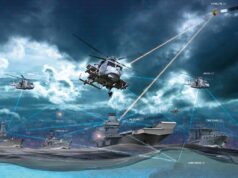

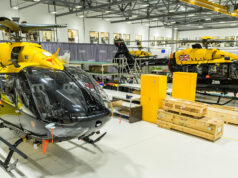



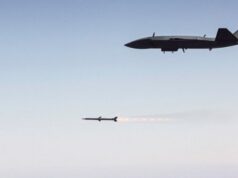
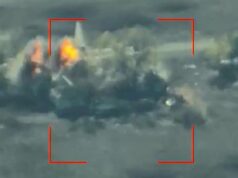
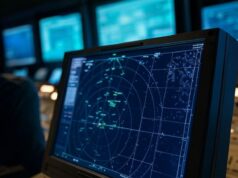
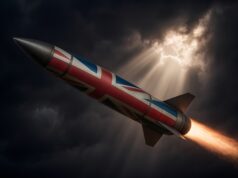

Great to have a VR augmented set up but be good to have real radar in the hawks. You have some quite small footprint radars that you can integrate now on the training craft. Also we should move to advanced hawk from what we have today. But with current state of funding I unlikely.
The funding is going to Aeralis who are targeting 2025 for prototype flight. HAL in Hampshire have started manufacturing airframe parts. The question is will the funding continue.
Do hope so it’s a big opportunity it would be a shame to once again have a product so good with Hawk that by the time we come to replacing it we are behind the curve and have to buy from abroad. If it were left to Bae that would already be the case sadly as they seem only interested in pushing Hawk to its last upgraded rivet to invested customers who will stick with it to the end as it gradually gets outclassed by new alternatives and thus not attractive to new potential customers and opportunities.
According to the Ministère des Armées reporting at Farnborough, “Aeralis has told us that it is in contact with the French authorities as part of the replacement of the Alpha Jets and our interlocutor would be very proud that the Patrouille of France just like the Red Arrows choose his plane.” (Translated link) But, I do think the phrase ‘when pigs fly’ comes to mind. It would be nice if this happens.
I’ve been following the Aeralis project for a couple of years, as best as I can with press releases and talking to air show attendees, where they have had stalls. Any additional information would be greatly appreciated. It’s an amazing modular design concept that has now been expanded to include unmanned options. Everything can be exchanged to produce wildly different aircraft. Engines single/twin; wings subsonic/supersonic, even the main fuselage with single seat, double tandem or no pilot at all!
The French connection may provide some funding as could working with SAAB but I think the future lies with a BAE partnership. Hawk cannot last forever but persuading them to drop it will not be easy. Pushing the unmanned options of loyal wingman for Tempest, refueling drone and ISTAR. Could be the key to unlock that door. With most of the design work already completed.
It would probably be more sensible to limit the modules and thereby reducing cost and complexity.
Can you imagine keep that many variables certified.
Every time you changed one module significantly you would have to retest every possible combination.
Then what you do with the 2/3 of an aircraft that you are not using and you cannot use because of the 1/3 that is always needed.
I’m all for innovation and BAE didn’t do a great job with getting the Hawk updated early enough and just sat back with a slightly lazy assumption that they would get the MOD call.
This, like the T31 project, looks like it is aimed at being a pencil sharpening exercise.
I would hope they make changing a module less of an issue. Think commercial aviation engine change then make it less complicated. The module will be a serial tracked part so the operating history would all be held for the module any limiting life or cycle parameters get inherented by the airframe. Systems like AMOS, Maintenix etc are more than capable of handling a module swap and it should not be any more complicated than swapping a large component on an airframe.
I believe Aeralis are considering a lease model so modules could be leased in. Again in someway not dissimilar to commercial aviation where the aircraft has components like APUs that are not owned by the operator. Of course you need a certain mass of operators to make that work. But most of the principles behind Aeralis are already proven in commercial aviation.
That wasn’t really what I was suggesting.
I was talking more about keeping the certification for the variable package current. Each variant needs to be certified as it is a discreet type.
Yeah but in reality is that any more complicated than an A321 A321LR and A321XLR. All variantes of the same airframe. I would assume you would only unstall the unswept wing and low power engine together. So the combinations could be limited as there’s logically no purpose for some combinations. Ultimately its still going to be less expensive than say 5 different airframes. Getting sales numbers will be key though.
Well spotted. I think the modular options would be more to do with the requirements of small nation customers. Using the same basic aircraft with new wings and engine(s) for higher speed. Dependant on what their pilots will be flying.
The RAF would probably rarely if ever chop and change during normal peacetime training. Having sufficient airframes to leave them as is. For the very reasons you state. The option being their if some operational requirement presents itself. Airframes for the Red Arrows I assume would be very much dedicated to the display role. (If they can stop bonking each other.
The fact that the unmanned drone version could be adapted for mission specific requirements, blows the mind.
T31 project has be confused. Take pity on this old soldier and please explain.
Saab have the Redhawk workshare with Boeing so they are involved with a competing product. Don’t have any more info than is available publicly. I know RR have pitched in with an Adour engine for prototype which will be subsonic imo.
Have Aeralis gone beyond fancy website and ppt. Great concept but we need this stuff now.
They opened the factory about 6 months ago. As I understand funds are their to deliver a prototype. Rolls are supplying Adour engine for the prototype. Thales onboard, HAL making components.
With the tech available today, you can simulate having a radar.
Yes my point if these had actual radar they can also used a low level interdiction assets. Make our trainers be low level fighters/bombers (dual use)
I guess that one advantage of augmented reality is that you can adapt the software to reflect developments in radar technology – which would be quicker, cheaper and easier than making expensive hardware changes (in theory at least).
Additionally, a quick reconfigure of the software load can be used between sorties to simulate different types of radar, targeted (pun intended) to the customer. We do this on commercial aviation for our sims – simple enough to adapt to different customers
I would like to see a new T3 Hawk based on the 2017 offering to India, which could use Asraam, Brimstone weapons & had a tweaked wing. BAE said they could make a cockpit that would act as a lead in trainer for F-35.